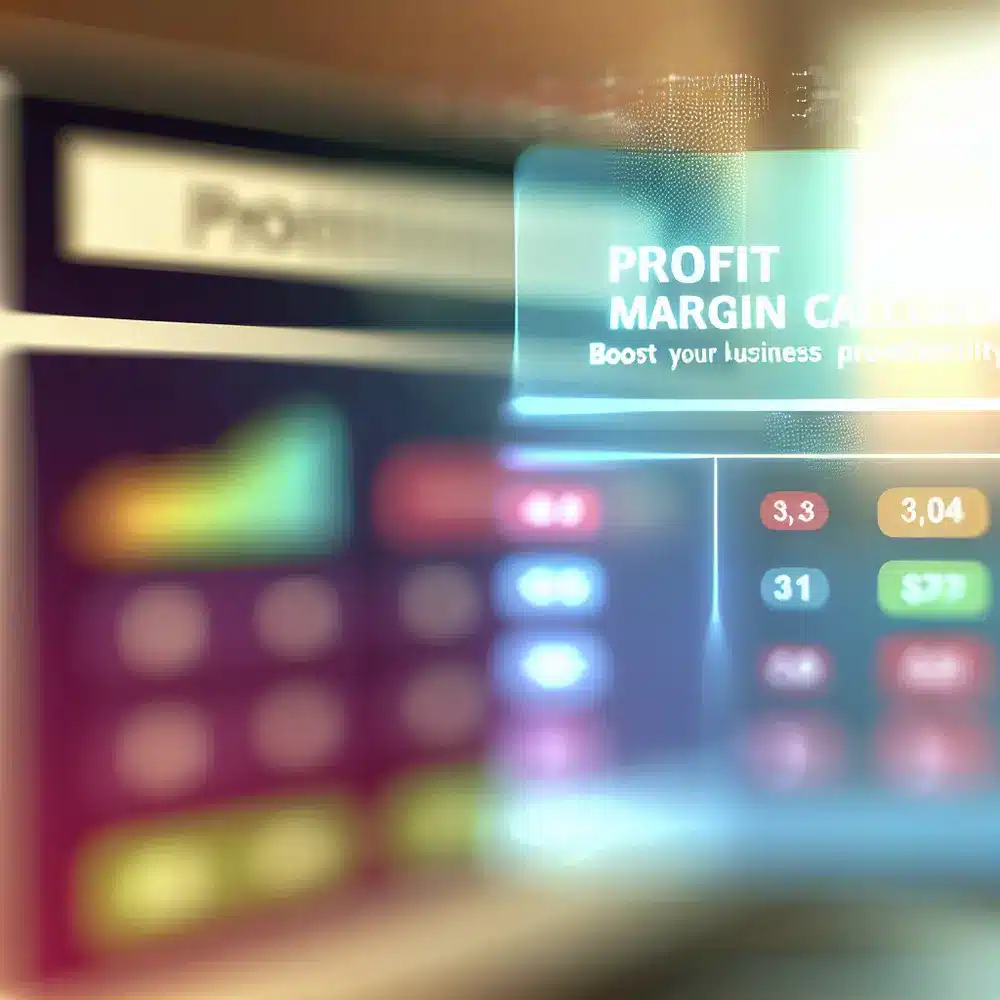As a business owner, you constantly seek ways to enhance profitability. Understanding profit margins is crucial for making informed decisions that affect your bottom line. You might wonder how to effectively gauge the efficiency of your company’s operations and ensure long-term sustainability. In this competitive landscape, mastering the intricacies of profit margins can distinguish your business from the rest.
This article will delve into profit margins and how a profit margin calculator can be pivotal in achieving financial success. You will learn about the different types of profit margins, the importance of utilizing a profit margin calculator, and how to analyze your financial metrics effectively. Get ready to transform your business approach and optimize profitability.
Understanding profit margins allows you to make smarter decisions. You can identify areas for improvement and adjust strategies accordingly, fostering a proactive mindset that enhances operational efficiency. Let’s explore how to leverage these insights for sustainable growth.
Understanding Profit Margins: The Key to Business Profitability
Profit margins are essential financial metrics that provide insight into your company’s profitability. By utilizing a profit margin calculator, you gauge how efficiently your operations generate profit relative to your sales revenue. Understanding profit margins empowers you to make informed decisions that enhance your overall business profitability.
There are different types of profit margins to consider, such as gross profit margin, operating profit margin, and net profit margin. Each metric offers unique insights into your business’s financial health. For instance, the gross profit margin focuses on the relationship between sales and direct costs, while the operating profit margin includes all operating expenses. Moreover, the net profit margin reflects final earnings after all expenses are deducted.
For example, the Transportadora Rápido analyzed their profit margins and discovered that their gross profit margin was lower than industry standards. This realization led them to reevaluate pricing strategies and cut unnecessary costs. As a result, they experienced a 15% increase in overall profitability within six months.
Using a profit margin calculator enables detailed sales analysis and comparison against industry benchmarks. This data empowers you to spot trends and identify cost-saving opportunities. If your gross profit margin falls below competitors, consider adjusting your pricing or optimizing operational efficiencies.
Additionally, understanding profit margins facilitates better forecasting. By monitoring these metrics over time, you can identify potential issues early and take corrective action. This proactive approach aligns your operational strategies with profitability goals.
Gross Profit Margin vs. Net Profit Margin: A Comparative Analysis
The gross profit margin represents your business’s financial health, focusing solely on sales and the costs of goods sold. In contrast, the net profit margin is more comprehensive, reflecting earnings after all operating expenses. Businesses should monitor both metrics closely, as they can inform different strategic decisions.
A case in point is the Loja Eletrônica Techstore, which maintained a high gross profit margin. However, their net profit margin was underperforming due to elevated operational costs. By reducing overhead through process optimization, they improved their net profit margin by 20%, demonstrating the importance of tracking both metrics.
Regularly assessing both margins equips you with the understanding needed to implement effective financial strategies, ensuring a more profitable business operation.
What is a Profit Margin Calculator?
A profit margin calculator is an indispensable tool for business owners and financial analysts aiming to assess and improve profitability. This calculator aids in understanding the relationship between costs, revenues, and profit, enabling effective financial metric analysis.
To utilize a profit margin calculator, input two essential figures: total revenue and total costs. The formula is straightforward: Profit Margin = (Total Revenue – Total Costs) / Total Revenue x 100. Understanding this percentage significantly influences strategic decisions, such as pricing adjustments and cost management.
Importance for Business Profitability
Enhancing profitability hinges on understanding profit margins. A profit margin calculator helps identify improvement areas, from cost management to sales strategies. For instance, if a business notes declining margins, it can use sales analysis to delve into the factors causing the decrease.
The Clínica Saúde Perfeita utilized a profit margin calculator after noticing a drop in profitability. By analyzing their sales data, they uncovered excessive operational costs that, when addressed, allowed them to increase their net profit margin by 18% within just three months.
Regularly calculating your profit margins offers insight into trends, allowing you to establish benchmarks and inform future planning. This proactive approach positions your business for long-term success.
Integrating a Profit Margin Calculator with Business Tools
For business owners looking to enhance financial analysis, integrating a profit margin calculator with other tools, such as CRM systems for WhatsApp, can streamline data management significantly. Centralizing revenue and cost information in one platform enhances communication and data-driven decision-making.
A practical example is the integration implemented by the Agência Digital Max. This synergy allowed them to analyze how customer interactions impacted profit margins. It’s no surprise they saw a 30% increase in sales efficiency and enhanced profit margins by 15%, all while improving client engagement.
Common Mistakes to Avoid When Calculating Profit Margins
While calculating profit margins is crucial, many fall victim to common mistakes that skew financial metrics. Awareness of these pitfalls can improve your sales analysis and decision-making processes.
One frequent mistake is omitting indirect costs. Many businesses focus on direct production costs without accounting for overheads. The Restaurante Sabor do Sul neglected utility expenses and inflated profit margins. Once they included all relevant costs, their profit margin accurately reflected their profitability.
Another error involves using incorrect revenue figures. Reliance on projected sales rather than actuals can distort calculations. Accurate real-time sales data is critical for informed adjustments and planning. Additionally, ignoring seasonal fluctuations can skew margins and misrepresent financial health.
Lastly, failing to monitor calculations regularly can lead to outdated insights. Profit margins can fluctuate due to operational changes, necessitating more frequent revisits to ensure relevancy.
Real-World Applications: Case Studies of Businesses Boosting Profitability
Various businesses have effectively utilized profit margin calculators to significantly boost profitability. Alimentos Naturais Vida Saudável applied their calculator to streamline product offerings. By identifying low-margin products, they optimized inventory, leading to a 25% overall increase in profit margins within a year.
A service-based business, Consultoria Estratégica Alfa, analyzed service packages’ profitability using a profit margin calculator. They discovered premium packages yielded higher margins, prompting a revised marketing strategy that increased profitability by over 30% in just nine months.
Moreover, a tech startup, InovaTech, implemented a profit margin calculator during product launches. This tool allowed them to project profitability effectively, leading to focused development on high-margin products. The calculated approach resulted in rapid growth and investor attraction.
Conclusion: Take Charge of Your Business Profitability with a Profit Margin Calculator
Utilizing a profit margin calculator is essential for business owners seeking to enhance profitability. This tool allows you to analyze financial metrics clearly, gaining insights into revenue and expenses. Measuring profit margins effectively equips you to make informed decisions that drive growth and efficiency.
Incorporating this calculator into your financial routine fosters diligent sales analysis. Adjusting pricing strategies and optimizing resource allocation can significantly contribute to profitability. This proactive approach fosters a culture of strategic financial awareness, essential for long-term success.
For financial analysts and sales managers, the profit margin calculator is pivotal in evaluating business performance. It distills complex financial data into tangible metrics, enhancing strategic discussions that elevate profitability. Embrace the power of a profit margin calculator to regain control over your business’s financial outcomes. For additional strategies on optimizing customer interactions, explore our CRM for WhatsApp.









